Costa Rica, located in Central America within the tropical zone, boasts an extraordinary level of biodiversity. Despite its small size, the country is home to approximately 6% of the world’s total species, making it one of the most biologically rich countries on the planet. However, increasing human activity in the country's rainforests and Caribbean waters has placed many native species under serious threat.
If you're curious about the animals that inhabit Costa Rica, this article will guide you through 29 representative species, including those currently endangered, highlighting the nation's rich wildlife heritage.
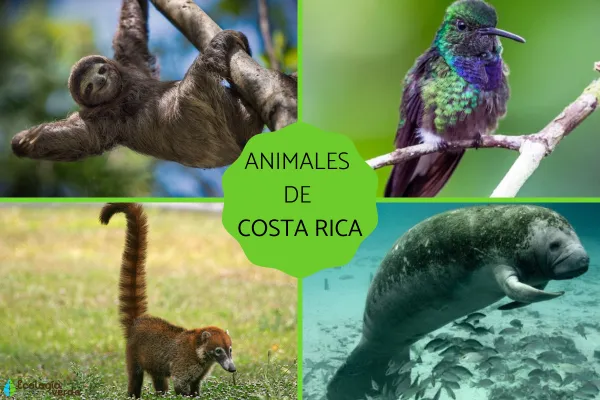
Known locally as “pizote,” the coati is a medium-sized mammal widespread across South America. In Costa Rica, it is commonly found in coastal zones, humid areas, tropical rainforests, and cloud forests.
The name "coati" comes from the Guaraní language and means "elongated nose," referring to its distinctive snout. Coatis are omnivorous and highly social animals, living in groups—unlike raccoons, which they resemble but are not closely related to.
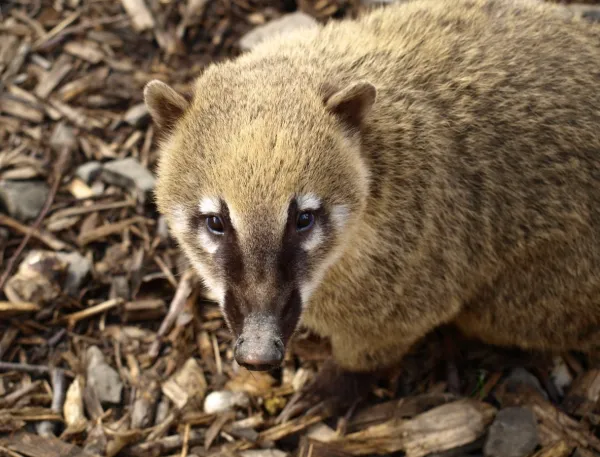
The scarlet macaw is one of Costa Rica's most visually striking birds. It ranges from southern Mexico to Peru and Bolivia and is a member of the parrot family (Psittacidae).
This bird is easily recognizable by its vibrant red and blue feathers and long, pointed tail. It primarily feeds on fruits and fleshy seeds, using its strong beak to crack open hard shells. Scarlet macaws nest in tall trees and inhabit mangroves, dry forests, and humid tropical woodlands.
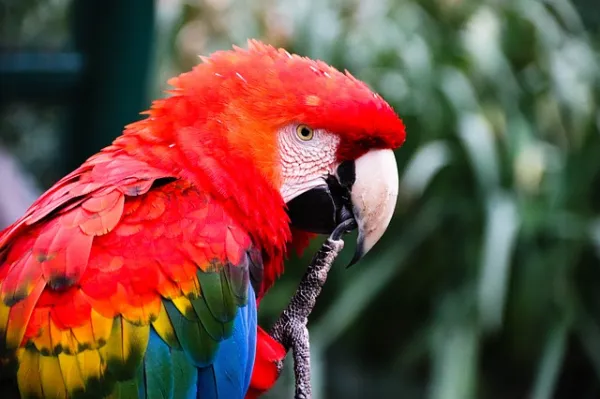
Also known as the “terciopelo” or “yellow beard,” the fer-de-lance is one of Costa Rica’s most dangerous snakes. This highly venomous pit viper is nocturnal and terrestrial, thriving in a range of habitats including tropical rainforests, evergreen forests, savannas, and areas near bodies of water.
Adult snakes feed on small mammals and reptiles, while juveniles primarily eat insects. It is a species capable of reproducing year-round and poses a notable risk to humans due to its potent venom.
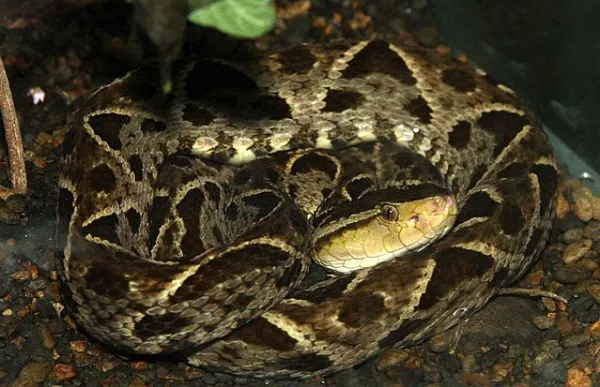
The American crocodile, often referred to in Costa Rica as the Costa Rican crocodile, is found in both freshwater and saltwater environments such as coastal zones, mangroves, lagoons, rivers, and lakes.
A nocturnal apex predator, it preys on fish, amphibians, turtles, waterfowl, and mammals. The species is currently classified as "Vulnerable" by the IUCN, primarily due to illegal hunting and habitat loss.
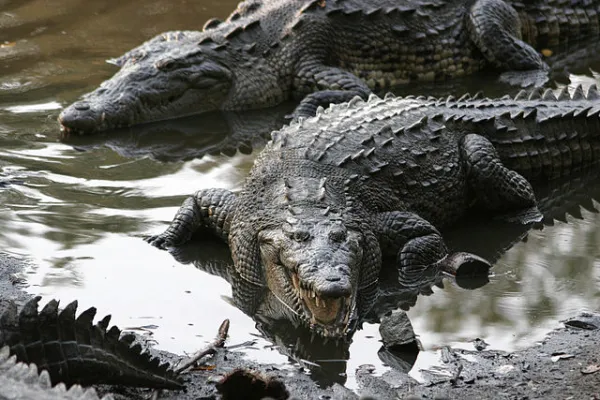
The olive ridley turtle is one of five species of sea turtles that nest on Costa Rican beaches, sometimes arriving in massive synchronized events known as "arribadas."
This small and abundant sea turtle feeds on fish, mollusks, and crustaceans. Despite its large population, it is listed as "Vulnerable" due to threats such as urban development, intentional and accidental capture, pollution, and climate-induced ocean temperature changes.

The West Indian manatee, often called the “sea cow,” is a national symbol of Costa Rica’s marine life. Capable of living in both freshwater and saltwater, these gentle giants can reach up to 4 meters in length and weigh over a ton.
In Costa Rica, Manatees-Are-Endangered.html">manatees can be found in Tortuguero National Park and the Gandoca-Manzanillo Wildlife Refuge. They are threatened by declining aquatic vegetation (their main food source), hunting for meat and hides, and marine pollution. Manatees have been protected under national law since 1953.
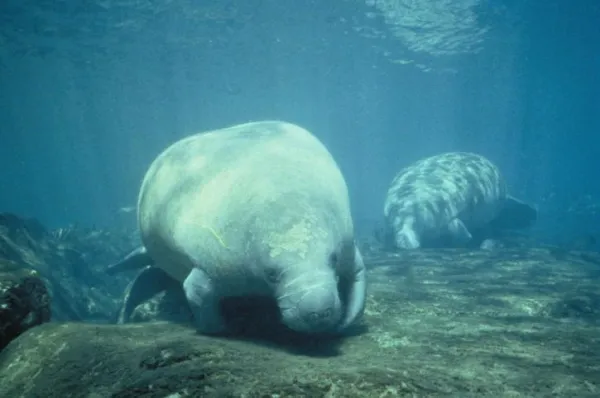
In addition to the above species, Costa Rica is home to many other fascinating animals, including:
Spotted sleeper goby (Eleotris picta)
Coco flycatcher (Nesotriccus ridgwayi)
Cocos finch (Pinaroloxias inornata)
Brown anole (Norops torosendii)
Mantled howler monkey (Alouatta palliata)
Leatherback sea turtle (Dermochelys coriacea)
Great green macaw (Ara ambiguus)
White-lipped peccary (Tayassu pecari)
Mangrove hummingbird (Amazilia boucardi)
Jaguar (Panthera onca)
Costa Rican puma (Puma concolor costaricensis)
White-tailed deer (Odocoileus virginianus)
Central American squirrel monkey (Saimiri oerstedii)
Virginia opossum (Didelphis virginiana)
Baird’s tapir (Tapirus bairdii)
Kemp’s ridley turtle (Lepidochelys kempii)
Linnaeus’s two-toed sloth (Choloepus didactylus)
Though fewer in number, some animals are endemic to Costa Rica, meaning they are found nowhere else in the world:
Heterodont pocket gopher (Orthogeomys heterodus)
Forest spiny pocket mouse (Heteromys oresterus)
Rodríguez's harvest mouse (Reithrodontomys rodriguezi)
Fiery-throated hummingbird (Panterpe insignis)
Pacific dwarf gecko (Sphaerodactylus pacificus)
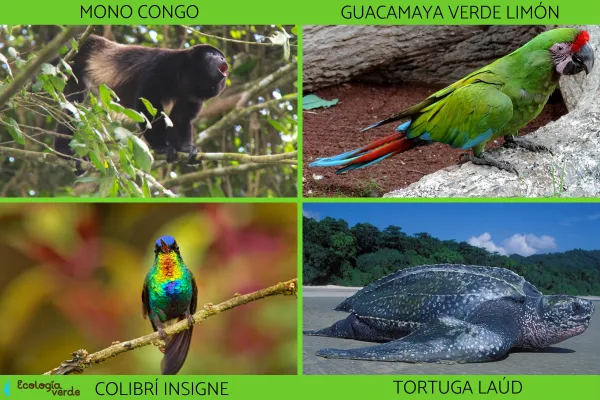
Costa Rica’s biodiversity is under increasing threat from habitat loss, pollution, and human exploitation. Here is a list of native animals currently classified as endangered:
Mantled howler monkey (Alouatta palliata)
Leatherback sea turtle (Dermochelys coriacea)
Great green macaw (Ara ambiguus)
Jaguar (Panthera onca)
Costa Rican puma (Puma concolor costaricensis)
Baird’s tapir (Tapirus bairdii)
Central American squirrel monkey (Saimiri oerstedii)
Manatee (Trichechus manatus)
Scarlet macaw (Ara macao)
American crocodile (Crocodylus acutus)
Olive ridley sea turtle (Lepidochelys olivacea)
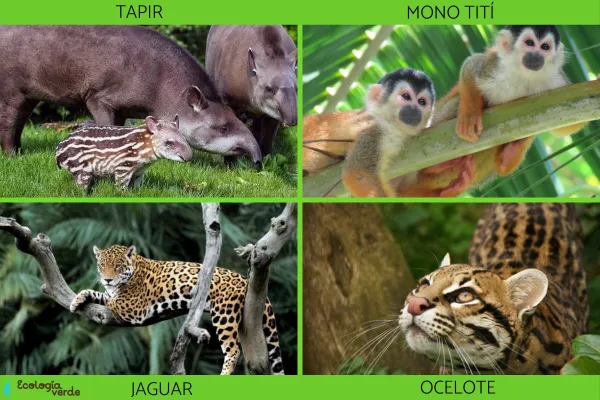
To explore more about this fascinating subject, you can read further about Costa Rica’s flora and fauna and the conservation efforts in place to protect this rich ecosystem.
Bibliography
Updated Lists of Fauna and Flora Species included in the CITES Appendices, distributed in Central America and the Dominican Republic: http://www.caftadr-environment.org/spanish/outreach/publications/CITES%20Updated%20Fauna%20and%20Flora%20Species%20(Spanish).pdf
animal tags: costa rican animals
We created this article in conjunction with AI technology, then made sure it was fact-checked and edited by a Animals Top editor.